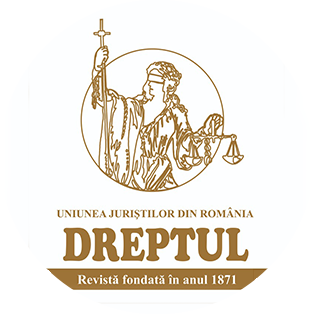-
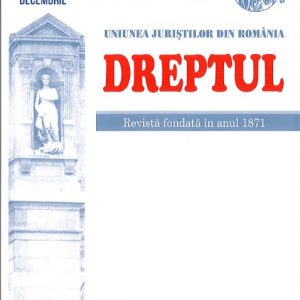 The institution of preventive arrest is regulated by the new Criminal Procedure Code in Article 223 and the following, representing the hardest preventive measure that can be taken against the defendant in the criminal prosecution phase, in the preliminary chamber phase or in the trial phase. As it is normal, the institutions referred to in the Criminal Procedure Code appear to be very strictly and concisely regulated, but even so, there may be problems in the practice of the courts and of the public prosecutor’s offices that function next to them, with regard to the interpretation of the rules. The measure of preventive arrest is the harshest of the preventive measures, because it completely deprives of liberty the defendant accused of committing an offence. In relation to the cases in which the measure of preventive arrest may be ordered and the conditions to be satisfied for taking this measure, the practice is not always unitary. If most of the cases expressly provided in the Criminal Procedure Code in which this measure may be ordered do not pose problems of interpretation, their applicability being strict and commonly understood by practitioners, some cases, also expressly provided, bring to light a series of profound legislative matters that will have to be solved, in the future, by means of the legislator’s action of amendment and supplementation of the provisions in the matter or by means of interpretation of these provisions by the High Court of Cassation and Justice in order to unify the judicial practice.
The institution of preventive arrest is regulated by the new Criminal Procedure Code in Article 223 and the following, representing the hardest preventive measure that can be taken against the defendant in the criminal prosecution phase, in the preliminary chamber phase or in the trial phase. As it is normal, the institutions referred to in the Criminal Procedure Code appear to be very strictly and concisely regulated, but even so, there may be problems in the practice of the courts and of the public prosecutor’s offices that function next to them, with regard to the interpretation of the rules. The measure of preventive arrest is the harshest of the preventive measures, because it completely deprives of liberty the defendant accused of committing an offence. In relation to the cases in which the measure of preventive arrest may be ordered and the conditions to be satisfied for taking this measure, the practice is not always unitary. If most of the cases expressly provided in the Criminal Procedure Code in which this measure may be ordered do not pose problems of interpretation, their applicability being strict and commonly understood by practitioners, some cases, also expressly provided, bring to light a series of profound legislative matters that will have to be solved, in the future, by means of the legislator’s action of amendment and supplementation of the provisions in the matter or by means of interpretation of these provisions by the High Court of Cassation and Justice in order to unify the judicial practice. -
 This paper is a plea for adopting the legal conception on the notion of result of the offence. It points out both the shortcomings of the formal conception, which dominates the current theory on the result of the offence, as well as the shortcomings of the old naturalistic conception, which is still preserved today, being supported by the highly questionable theory of the civil tort liability.
This paper is a plea for adopting the legal conception on the notion of result of the offence. It points out both the shortcomings of the formal conception, which dominates the current theory on the result of the offence, as well as the shortcomings of the old naturalistic conception, which is still preserved today, being supported by the highly questionable theory of the civil tort liability. -
 The purpose of imposing the criminal processual sanctions is to respect the principle of legality that governs the criminal trial. The principle of legality, established in Article 2 of the Criminal Procedure Code, is the fundamental principle of the criminal trial according to which the conduct of the entire criminal trial, namely in all its phases (criminal prosecution, preliminary chamber, judgment, enforcement phase), takes place strictly according to the provisions stipulated by the law. The effects of this principle are materialized in a series of processual guarantees, one of the most powerful guarantees of the fulfilment of the processual and procedural acts according to the legal rules being precisely the processual sanctions. The problems which arise in the practice in connection with the application and interpretation of the regulations incidental in the matter of criminal processual sanctions have led us to proceed to the elaboration of this study.
The purpose of imposing the criminal processual sanctions is to respect the principle of legality that governs the criminal trial. The principle of legality, established in Article 2 of the Criminal Procedure Code, is the fundamental principle of the criminal trial according to which the conduct of the entire criminal trial, namely in all its phases (criminal prosecution, preliminary chamber, judgment, enforcement phase), takes place strictly according to the provisions stipulated by the law. The effects of this principle are materialized in a series of processual guarantees, one of the most powerful guarantees of the fulfilment of the processual and procedural acts according to the legal rules being precisely the processual sanctions. The problems which arise in the practice in connection with the application and interpretation of the regulations incidental in the matter of criminal processual sanctions have led us to proceed to the elaboration of this study. -
 The aim of the present paper is to cover the main aspects regarding the legal treatment of witness protection in the Romanian criminal legislation by presenting, from a critical standpoint, the current regulation of the witness protection. The authors analysed essential aspects regarding the protection of threatened witnesses, the protection measures ordered during the criminal investigation, the protection measures ordered during the trial or the protected witnesses hearing, as well as the protection of vulnerable witnesses by reporting to the European Convention of Human Rights provisions and jurisprudence. Also, the present paper analyses the probative value of the protected witness statements and contains comparative law matters on witness protection laws in several European countries.
The aim of the present paper is to cover the main aspects regarding the legal treatment of witness protection in the Romanian criminal legislation by presenting, from a critical standpoint, the current regulation of the witness protection. The authors analysed essential aspects regarding the protection of threatened witnesses, the protection measures ordered during the criminal investigation, the protection measures ordered during the trial or the protected witnesses hearing, as well as the protection of vulnerable witnesses by reporting to the European Convention of Human Rights provisions and jurisprudence. Also, the present paper analyses the probative value of the protected witness statements and contains comparative law matters on witness protection laws in several European countries. -
 The legal report between the commercial company and the administrator is a report of mandate. The administrator mandate can be with representation or without representation and has contractual content and also legal one. The powers of the administrator of the company include two elements: the power to fulfil management abilities; the power to represent if it was expressly granted. The power to represent is distinct from the power of administration and exists only if it has been conferred. The representation of the company by the administrator is exercised differently depending on the type of company. For concluding the dispositions, the company’s administrator does not need a special power of attorney in the authentic form for this purpose. When the acts concluded by the representatives of the company are done with the overcoming of its object, they are the duty of the company except in the cases when the third parties knew or should have known the overcoming of the object or when the acts of the same are concluded by exceeding the limits of the powers of the respective bodies.
The legal report between the commercial company and the administrator is a report of mandate. The administrator mandate can be with representation or without representation and has contractual content and also legal one. The powers of the administrator of the company include two elements: the power to fulfil management abilities; the power to represent if it was expressly granted. The power to represent is distinct from the power of administration and exists only if it has been conferred. The representation of the company by the administrator is exercised differently depending on the type of company. For concluding the dispositions, the company’s administrator does not need a special power of attorney in the authentic form for this purpose. When the acts concluded by the representatives of the company are done with the overcoming of its object, they are the duty of the company except in the cases when the third parties knew or should have known the overcoming of the object or when the acts of the same are concluded by exceeding the limits of the powers of the respective bodies. -
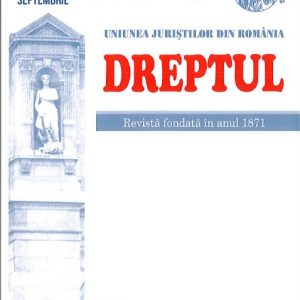 The offence of favouring of the perpetrator has evolved along the successive regulations in terms of area of incrimination, both with reference to the criminal activities incriminated, but also with reference to the favoured persons. According to the new provisions of criminal law, it is incriminated under this name the favouring of any person who has committed a deed provided by the criminal law, which does not necessarily have to meet the requirements in order to be considered an offence, and it is also incriminated only personal favouring, not the real one, consisting of the aid given in order to ensure the product of the offence for the perpetrator. The offence of favouring the perpetrator has an autonomous nature in relation to the offence committed by the favoured person and has a subsidiary nature in relation to other offences, the aid given to a perpetrator receiving the qualification of favouring only when other legal provisions do not incriminate special assumptions of favouring.
The offence of favouring of the perpetrator has evolved along the successive regulations in terms of area of incrimination, both with reference to the criminal activities incriminated, but also with reference to the favoured persons. According to the new provisions of criminal law, it is incriminated under this name the favouring of any person who has committed a deed provided by the criminal law, which does not necessarily have to meet the requirements in order to be considered an offence, and it is also incriminated only personal favouring, not the real one, consisting of the aid given in order to ensure the product of the offence for the perpetrator. The offence of favouring the perpetrator has an autonomous nature in relation to the offence committed by the favoured person and has a subsidiary nature in relation to other offences, the aid given to a perpetrator receiving the qualification of favouring only when other legal provisions do not incriminate special assumptions of favouring. -
 On number of occasions, the Constitutional Court is in the position to determine whether a norm is constitutional or not, referring to the provisions of Article 1 (5) of the Constitution, republished version. In order to comply with the provisions of this article, it is necessary for the law, the obedience of which is required by the very first article of the Basic Law, to be clear, precise and predictable. There are numerous decisions of the Constitutional Court which state that the law is devoid of „quality”, i.e. the law is not clear, precise and predictable. The non-compliance of these requirements results in a violation of the provisions of Article 6 (1) of the Law No 24/2000 on normative technical norms for the drafting of normative acts, republished, subsequently amended and supplemented, according to which the draft of the normative act must establish necessary, sufficient and possible rules leading to the greatest legal stability and efficiency. Thus, whenever the legislator uses notions whose legal nature is uncertain or do not integrate from the conceptual point of view into the normative system, or when the legislator resorts to the use of innovative concepts in the normative acts and does not define them in their very content, the Constitutional Court will have all the reasons to establish that the provisions of Article 1 (5) of the Constitution are violated, the text being inadequately drafted.
On number of occasions, the Constitutional Court is in the position to determine whether a norm is constitutional or not, referring to the provisions of Article 1 (5) of the Constitution, republished version. In order to comply with the provisions of this article, it is necessary for the law, the obedience of which is required by the very first article of the Basic Law, to be clear, precise and predictable. There are numerous decisions of the Constitutional Court which state that the law is devoid of „quality”, i.e. the law is not clear, precise and predictable. The non-compliance of these requirements results in a violation of the provisions of Article 6 (1) of the Law No 24/2000 on normative technical norms for the drafting of normative acts, republished, subsequently amended and supplemented, according to which the draft of the normative act must establish necessary, sufficient and possible rules leading to the greatest legal stability and efficiency. Thus, whenever the legislator uses notions whose legal nature is uncertain or do not integrate from the conceptual point of view into the normative system, or when the legislator resorts to the use of innovative concepts in the normative acts and does not define them in their very content, the Constitutional Court will have all the reasons to establish that the provisions of Article 1 (5) of the Constitution are violated, the text being inadequately drafted. -
 The jurists naturally privilege the continuity, stability, coherence. If the political tends to periodically break the coherence of the social structures, the jurists conceive themselves as „doctors” thereof, and „their technique is precisely the extirpation of the void, the anticipation of the crises, the assurance of the continuity, or even the mending, after the stroke, of the ruptures of the institutional weave”1. The legal privileging of the continuity of the social evolution is translated by the structuring of the system on the basis of some principles aimed at attenuating the tendencies of radicalization of the social claims in the name of the prevalence of a certain conception about the good society over its alternatives. It is fundamental for the jurists that the law ensures the priority of the protection of freedom through the mechanisms of the rule of law over the general interest resulted from the democratic exercise of power. The law based on this vision can not be the result of a general transcendent interest over the interests of the members of the society, but must be the result of the accessibility and availability thereof.
The jurists naturally privilege the continuity, stability, coherence. If the political tends to periodically break the coherence of the social structures, the jurists conceive themselves as „doctors” thereof, and „their technique is precisely the extirpation of the void, the anticipation of the crises, the assurance of the continuity, or even the mending, after the stroke, of the ruptures of the institutional weave”1. The legal privileging of the continuity of the social evolution is translated by the structuring of the system on the basis of some principles aimed at attenuating the tendencies of radicalization of the social claims in the name of the prevalence of a certain conception about the good society over its alternatives. It is fundamental for the jurists that the law ensures the priority of the protection of freedom through the mechanisms of the rule of law over the general interest resulted from the democratic exercise of power. The law based on this vision can not be the result of a general transcendent interest over the interests of the members of the society, but must be the result of the accessibility and availability thereof. -
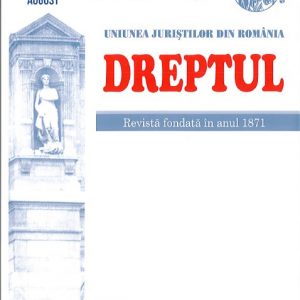 In this study we wish to discuss and find a solution to the many aspects specific to the measures with equivalent effect to the quantitative restrictions, but also to follow up the influences on the policy of protection of similar domestic products within the European Union. We will analyze in detail the free movement of goods, as well as aspects concerning the customs duties and the modality to impose them. We will define the notion of measures with equivalent effect to the quantitative restrictions and we will also subject to research the modalities in which they arise. For the elaboration of this study, we will take into account the domestic law in the matter, the provisions of the international conventions on the free movement of goods, the provisions in the matter of the European law, the legislation and the case law of different states, and we will also raise for discussion the Dassonville and Keck decisions which are of a particular importance in the MEERC matter.
In this study we wish to discuss and find a solution to the many aspects specific to the measures with equivalent effect to the quantitative restrictions, but also to follow up the influences on the policy of protection of similar domestic products within the European Union. We will analyze in detail the free movement of goods, as well as aspects concerning the customs duties and the modality to impose them. We will define the notion of measures with equivalent effect to the quantitative restrictions and we will also subject to research the modalities in which they arise. For the elaboration of this study, we will take into account the domestic law in the matter, the provisions of the international conventions on the free movement of goods, the provisions in the matter of the European law, the legislation and the case law of different states, and we will also raise for discussion the Dassonville and Keck decisions which are of a particular importance in the MEERC matter. -
 The relationship between the constitutional norms and the European Union law is interpreted differently, as there are several doctrinal conceptions and different case law solutions. A trend of thought affirms the supremacy of the Constitution, including over the European Union law, even though it accepts the priority of application of the latter, in its binding rules, over all the other rules of domestic law, and other trend affirms the priority of the unconditional application of all the provisions of the European Union law over all the norms of the domestic law, including over the constitutional norms. There are European constitutional jurisdictions which have established that they have the competence to conduct the control over the constitutionality of the European Union law, integrated into the domestic legal order, by virtue of the principle of supremacy of the Basic Law. In this study we analyze the interferences between the principle of priority of the European Union law and the principle of supremacy of the Constitution with reference to the doctrine and the relevant case law in the matter. Key words: principle of priority of the European Union law; principle of supremacy of the Constitution; obligativity of the legal norms of the European Union; control of the constitutionality of the legal acts of the European Union integrated into the domestic law; compliance of the domestic law with the European Union law.
The relationship between the constitutional norms and the European Union law is interpreted differently, as there are several doctrinal conceptions and different case law solutions. A trend of thought affirms the supremacy of the Constitution, including over the European Union law, even though it accepts the priority of application of the latter, in its binding rules, over all the other rules of domestic law, and other trend affirms the priority of the unconditional application of all the provisions of the European Union law over all the norms of the domestic law, including over the constitutional norms. There are European constitutional jurisdictions which have established that they have the competence to conduct the control over the constitutionality of the European Union law, integrated into the domestic legal order, by virtue of the principle of supremacy of the Basic Law. In this study we analyze the interferences between the principle of priority of the European Union law and the principle of supremacy of the Constitution with reference to the doctrine and the relevant case law in the matter. Key words: principle of priority of the European Union law; principle of supremacy of the Constitution; obligativity of the legal norms of the European Union; control of the constitutionality of the legal acts of the European Union integrated into the domestic law; compliance of the domestic law with the European Union law. -
 In essence, the expropriation procedure goes through two stages, the administrative stage and the judicial stage, the common law in the matter being represented by the Law No 33/1994, as amended and supplemented. The litigation procedure is criticizable however, in many aspects, for the lack of transparency and of access to data, from the perspective of the holder of the restricted real right. Thus, although in the preamble of this normative act it is affirmed the necessity of equalizing the right of private ownership with the public interest, the latter has priority in many of the situations that have arisen in practice.
In essence, the expropriation procedure goes through two stages, the administrative stage and the judicial stage, the common law in the matter being represented by the Law No 33/1994, as amended and supplemented. The litigation procedure is criticizable however, in many aspects, for the lack of transparency and of access to data, from the perspective of the holder of the restricted real right. Thus, although in the preamble of this normative act it is affirmed the necessity of equalizing the right of private ownership with the public interest, the latter has priority in many of the situations that have arisen in practice. -
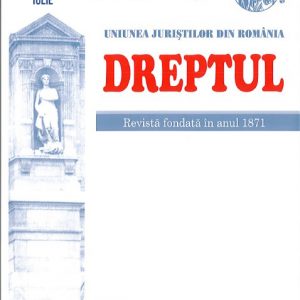 The dilemma on the bicameralism or unicameralism of the EC/EU legislator has existed for a long time. Not a few times, given the name of Parliament, operating with relative similarities regarding the states as subjects of international law, it was considered that it was and remained the legislature of the EC/EU. Over time, primary law and practice were likely to clarify things. Thus, at the beginnings of the Community construction, the Council acted as genuine supreme legislator, which had been gradually joined, as an institution of political control, consultation, cooperation and co-decision, by the European Parliament, so that currently the two institutions are equally involved in the legislative process of a two-chamber system.
The dilemma on the bicameralism or unicameralism of the EC/EU legislator has existed for a long time. Not a few times, given the name of Parliament, operating with relative similarities regarding the states as subjects of international law, it was considered that it was and remained the legislature of the EC/EU. Over time, primary law and practice were likely to clarify things. Thus, at the beginnings of the Community construction, the Council acted as genuine supreme legislator, which had been gradually joined, as an institution of political control, consultation, cooperation and co-decision, by the European Parliament, so that currently the two institutions are equally involved in the legislative process of a two-chamber system.
